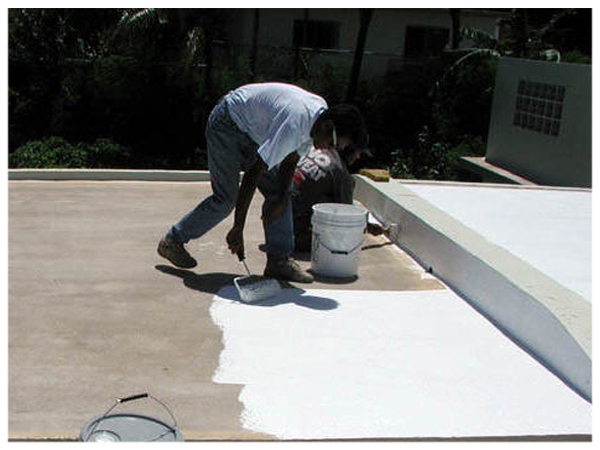Concrete which has not been trowel finished will have a surface that is more porous than one which has been trowelled. When Liquid Rubber is applied directly to such a porous surface it will produce a high density of small craters in the resulting membrane. This is caused by the fact that Liquid Rubber actually penetrates into the pores, leaving a crater on surface . The following procedure is recommended to prevent formation of surface craters:
1) Apply a light coat of one of the following products to seal the surface:
a.) Water based acrylic Elastomeric Roof Coating( primer or base -coat version)
b.) Solvent based chlorinated rubber or Hypalon product.
c.) Solvent based neoprene product.
The choice of water or solvent based product should be based on temperature and humidity conditions. For water based products, relative humidity should be less than 70% and temperature 60 degrees or higher. Solvent based products should be used at low temperatures and high relative humidity.
2) Liquid Rubber may be applied when primer application is sufficiently dry. Water based products should be allowed to dry thoroughly, as any surface moisture will interfere with the adhesion of the rubber. A single coat of Liquid Rubber is preferable to multiple coats.



